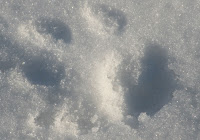SCAVENGER HUNT
From afar it’s pure power and grace. The bird is massive. It weighs 1 to 2 kilos and stands 2-1/2 feet tall. That wingspan is 6 feet.
Up close, the turkey vulture or buzzard is more like nauseating. It’s about that face: it’s red; it’s bald; it’s gnarly. He does take after his namesake a bit. Still, “buzzard with all the trimmings” is going to be a hard sell.
Up close, the turkey vulture or buzzard is more like nauseating. It’s about that face: it’s red; it’s bald; it’s gnarly. He does take after his namesake a bit. Still, “buzzard with all the trimmings” is going to be a hard sell.
 |
| Actual turkey |
 |
| Turkey vulture |
Buzzards travel and even roost in groups called venues of vultures. We often see 10-12 circling, an unsettling image at our age. Eagles flap their wings much more often; vultures coast through the sky. They ride thermals to gain altitude. Having once ridden in a glider, I can attest to how fun that is. These guys don't seem like party animals, however; and actually, they're cruising for carrion.
Turkey buzzards have a terrific sense of smell. They ride the thermals, sniffing the air for gases rising from unfortunate former beasts below. They can't sing for their suppers; all they can manage is to grunt and snort a bit but nothing melodious.
Vultures prefer to eat herbivores. I had never thought of them being all that fussy.
As you can imagine, when you eat decaying animals, you pick up a few nasty bugs with your dinner. That’s why it’s handy to have that bald vulture face. I remember seeing Cheerios stuck my husband’s beard, and dead flesh would likely be a lot worse. Perching in trees with wings spread, the buzzards dry off, and that reduces some of those bacterial hitchhikers. They also use this pose to warm themselves in the sun.
It’s tough to tell a male from a female vulture, and frankly, for me, that falls well into the category of leave well enough alone anyway.
Planning on challenging a turkey vulture anytime soon? I’m betting on the vulture. The way he defends his family is by vomiting. Consider the buzzard's diet--disgusting even before it's consumed. Now imagine him regurgitating that in front of you, the enemy. The stench of hurled carrion fends off most predators. It also burns the eyes. It's good advice to live by: never tempt a vulture to vomit.
Who out there thinks this has gotten as disgusting as it possibly can get? Noop. Not even close. Vultures eliminate on their own legs. This serves a good purpose, though not enough to tantalize most of us to adopt the practice. Their urine and feces cool the legs (get a fan, stupid) and also kill the nasty bacteria that vultures have to step in all the time.
I will leave you with some positive thoughts about vultures. They are beautiful when soaring across the sky. They are willing to remove road kill so we don't have to do that. And my otherwise smart dogs race around and around the meadows far below them, barking at them. It saves a lot of time and energy if you can get a turkey buzzard to walk your dogs.
 |
| Carrion, oh loyal and much maligned clean-up crew. Carry on. |
To see Turkey vultures drying their wings:
http://www.youtube.com/watch?v=mSs8kbUHEfA&feature=related
or
http://www.youtube.com/watch?v=7L1mvBwNpS4&feature=related
http://www.youtube.com/watch?v=mSs8kbUHEfA&feature=related
or
http://www.youtube.com/watch?v=7L1mvBwNpS4&feature=related





























































